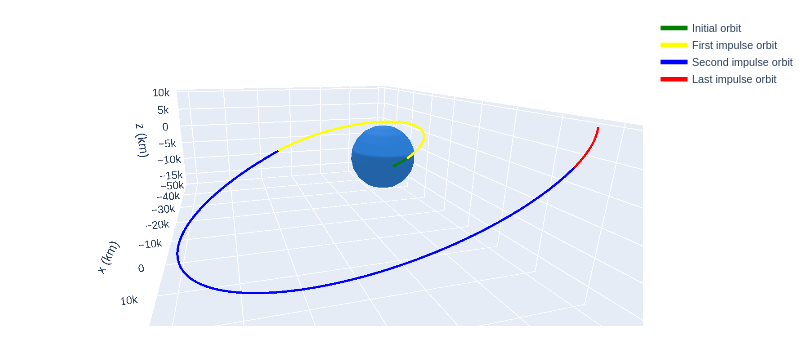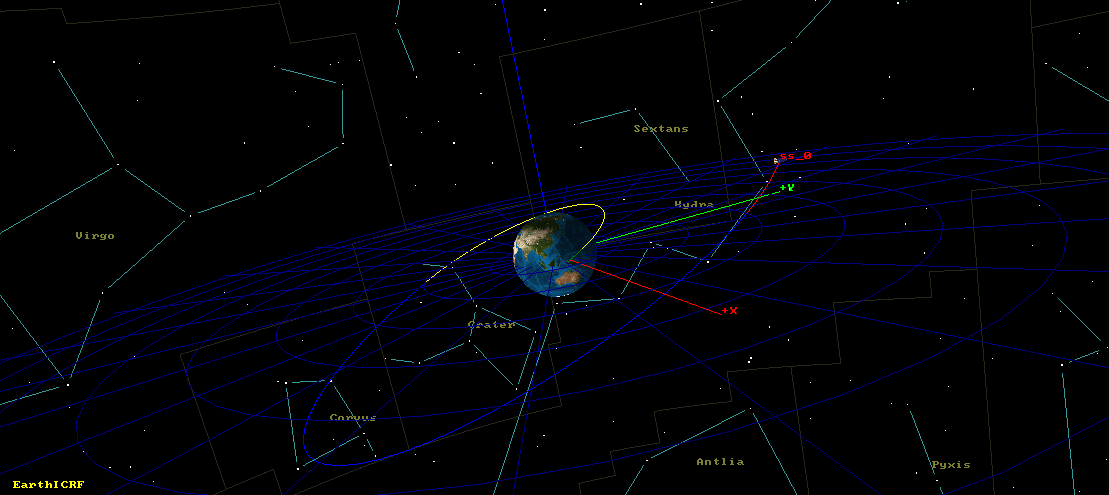Impulsive 3D maneuvers have been validated!
As part of the NumFOCUS small development grants, the poliastro/validation repository has increased its activity in order to reach its main goal: validate poliastro's most complex features against similar software.
One of those features are impulsive maneuvers (Hohmann and Bi-elliptic) when applied to non-equatorial orbits. The absence of numerical results in literature and similar sources, made impossible to test associated pieces of code to impulsive maneuvers for orbits with inclination and spacecraft not placed in periapsis. However, this situation has changed, as they are now validated against Orekit and GMAT.


You can see corresponding pull-request for Hohmann validation and Bi-elliptic validation. Not only that, a continuous integration tool has been setup. This ensures that if any bug is introduced within main poliastro source code, we can detect it and fix it without any problem.
One interesting thing is that code making use of poliastro API is shorter than that one based in Orekit or GMAT. This is important from the point of view of readable code and simplicity. However, let us not forget that both Orekit and GMAT provide amazing capabilities, so this might be a reason behind more lines of code when using their APIs.
In addition to previous implementations, having a look at other similar software has given us some ideas about future features of poliastro. For example, we thought about the possibility of expanding our events detectors in order to locate in time special situations such us when spacecraft will be under umbra (eclipse) or when it will be visible over the horizon for a particular topocentric location.
The idea is now to keep validating more code, in this case the one associated with planetary reference frames and their conversions between them. This is a major topic within the actual state of poliastro, as it is not easy at all to check if conversions are properly performed.
Stay tuned for more about the validation work we are carrying out!